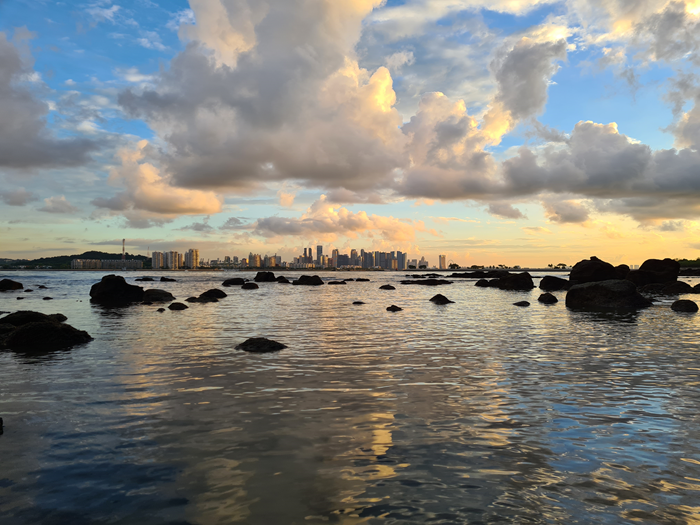Land in Singapore is scarce and low-lying, with 30% of the country’s elevation measuring less than five metres above sea level. With the looming threat of climate change, the densely populated island is part of the global coastal population that is especially vulnerable to sea-level rise. Projections of sea-level rise are therefore crucial to better prepare for inevitable challenges the future will bring.

View of Singapore (Source: Dr Timothy Shaw/Earth Observatory of Singapore)
In a new study published in Communications Earth and Environment, Dr Timothy Shaw, Senior Research Fellow at the Earth Observatory of Singapore (EOS), and his collaborators, project future sea-level rise in Singapore and compare the results with sea-level changes over the past 22,000 years. They show for the first time how projected rates of sea-level rise in Singapore under a high emission scenario, where societal efforts to reduce emissions are inadequate, are faster than during any other period during the last 22,000 years.
The scientists combined datasets that recorded past sea-level changes in Singapore and the Sunda Shelf to reconstruct the most complete sea-level record in tropical and equatorial regions for the period studied. To do this, the team used all available published data from mangrove environments, intertidal deposits and coral microatolls, which are natural archives showing how sea level responded to climate change in the past.

Dr Timothy Shaw analysing a range of datasets about past sea-level changes (Source: Yasmin binte Mohamed Basir/Earth Observatory of Singapore)
Using the most up-to-date sea-level projections from the Intergovernmental Panel on Climate Change (IPCC) for Singapore, the scientists projected sea level in Singapore to rise between 0.58 meters and 1.37 meters by 2150. They show rates of future sea-level rise under a moderate to high emissions scenario were only last exceeded during rapid ice melting events of the last deglacial period, which took place between 14,000 and 9,000 years ago and led to great changes in the Southeast Asia landscape and migration of ancestral populations.
Despite similar rates in the past, the timescales of present and future changes are now accelerated. “Where past changes happened over thousands of years, they will now occur over tens to hundreds of years. As such, there is a large uncertainty about how the ice sheets will respond to rapid changes in temperature,” said Dr Shaw.

Mangroves in Singapore (Source: Jeremy Kwok/Unsplash)
Future sea-level rise may also threaten the survival of coastal environments. For example, studies have shown that mangroves cannot survive if rates of sea-level rise exceed about 7 millimetres per year. Projected rates of sea-level rise in Singapore, increasing at 7.3 to 11 millimetres per year by 2150 under moderate to high emission scenarios, surpass this survival threshold of mangroves. Dr Shaw explains, “The difference between our future climate pathways is clear. A low-emissions pathway that slows the rate of sea-level rise, allows nature-based solutions such as mangroves to thrive and continue providing many ecosystem services. A high-emissions pathway that increases the rate of sea-level rise, however, will question their very survival and long-term effectiveness in the fight against climate change.”
The more accurate the projections of sea-level rise are, the better we can mitigate challenges caused by sea-level rise – this is valuable not only to Singapore but also other low-lying coastal regions. As Dr Shaw says, “With Southeast Asia containing more than one third of all the world’s most ecologically diverse mangroves and corals, careful management and intervention will be required to ensure their survival and long-term effectiveness is upheld in the face of rising sea level.”
Dr Shaw recently spoke about this with The Straits Times.
This research was supported by the Ministry of Education under a range of grants including the SEA2 Program, the National Research Foundation, Singapore, and National Environment Agency, Singapore under the National Sea Level Programme Funding Initiative (award No. USS-IF-2020-1).